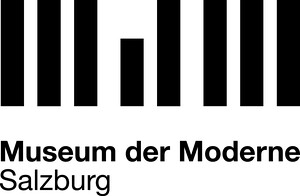Radical: Architecture & Prototypes
November 26, 2016–March 5, 2017
Mönchsberg
Mönchsberg 32
5020 Salzburg
Austria
Hours: Tuesday–Sunday 10am–6pm,
Wednesday 10am–8pm
T +43 662 842220403
info@mdmsalzburg.at
The Museum der Moderne Salzburg proudly presents a grand retrospective surveying the work of Walter Pichler spanning five decades. Crossing the boundaries between architecture, design, and sculpture, Pichler was one of the most idiosyncratic artists of his time. From his early architectural visions across the series of Prototypes to his recently realized building projects, the exhibition shines a spotlight on an oeuvre that continues to inspire artists working today. The presentation includes a wealth of previously unpublished material.
A native of South Tyrol, the Austrian artist Walter Pichler (1936, Deutschnofen, Italy–2012, Vienna, Austria) first drew notice in the early 1960s with architectural designs and models that were as radical as they were utopian. The series of what he called “Prototypes” (1966–69) Pichler developed over the following years laid the foundation for an international artistic career that was virtually unparalleled at the time. Trained as a graphic designer, Pichler worked in sculpture and design, pushing the boundaries between these disciplines and architecture. At a relatively young age, he had work showcased in celebrated exhibitions and renowned museums: at the Museum of Modern Art in New York (1967 and 1975), the 5th Biennial in Paris (1967), the 4th Documenta in Kassel (1968), and the Austrian pavilion at the 40th Venice Biennale (1982). As his international reputation rose rapidly, Pichler, in 1972, retreated to a farm in St. Martin, a village in the Austrian state of Burgenland, where he worked in isolation from the art world to realize his vision of the ideal structures to house his sculptures. Still, he was regularly prevailed upon to present his work in museum exhibitions, submitting his art to the scrutiny of these institutions and its audiences. Beginning in the late 1980s, Pichler’s work was shown in a series of major retrospectives, for instance at the Städel Museum in Frankfurt am Main (1987), the Austrian Museum for Applied Arts (1988 and 2011) and the Generali Foundation in Vienna (1998), or at the Stedelijk Museum in Amsterdam (1998). Walter Pichler died in Vienna in 2012 and the exhibition coincides with his eightieth birthday.
The comprehensive retrospective the Museum der Moderne Salzburg dedicates to this influential artist proposes a new perspective on his early radical architectural designs and the iconic “Prototypes” series, which are considered here in conjunction with his design projects and realized buildings, including recent projects. Around 230 works, including a wealth of previously unpublished material, on display in the spacious galleries on level [4] of the Museum der Moderne Salzburg’s Mönchsberg venue illustrate the extraordinary range of the artist’s oeuvre. “Our longstanding close relationship with Walter Pichler—we worked together on several projects—and now with the Pichler Archive, and thanks to the permanent loan of the Generali Foundation Collection, which has the single largest collection of ‘Prototypes,’ to the Museum der Moderne Salzburg enable us to draw from a wealth of resources for this retrospective, which also presents previously unpublished materials to the public,” Sabine Breitwieser, director of the museum and curator of the exhibition, underscores. “The exhibition is further enhanced by important works on loan from the artist’s estate and numerous other collections and offers visitors vivid impressions of Pichler’s buildings through films we commissioned specifically for this purpose,” the curator emphasizes.
Curators: Sabine Breitwieser, Director; with Christina Penetsdorfer, Assistant Curator, Museum der Moderne Salzburg
Exhibition architecture: Wilfried Kuehn, Kuehn Malvezzi, Berlin/Milan
Raymond Pettibon
Homo Americanus
November 19, 2016—February 12, 2017
Mönchsberg [3]
The exhibition Raymond Pettibon. Homo Americanus at the Museum der Moderne Salzburg presents the sharp reflection of the myth of American culture in the exceptional work of a great graphic artist. The show includes more than 500 works illustrating Pettibon’s incisive take on the American Dream—from Woodstock to the so-called War on Terror.
The Museum der Moderne Salzburg presents a unique exhibition of the work of the American artist Raymond Pettibon (1957 Tucson, Arizona–New York, US) on level 3 of its Mönchsberg venue. Over the past decades, Pettibon has created a sprawling and idiosyncratic oeuvre that has made him one of the most influential artists of his time. His sharp critique of contemporary culture and society draws on the literature of the 19th and 20th centuries as well as popular culture. In his drawings, text and image blend into each other to create a harsh yet poetic language. “For over four decades, Pettibon has dissected stereotypes of the American mainstream as well as its subculture. Homo Americanus is Pettibon’s emblematic depiction of the myth of America and a reality dominated, in his vision, by phony morality and the decline of civilization,” says Sabine Breitwieser, director of the Museum der Moderne Salzburg. The exhibition presents over 500 drawings, album covers, flyers, fanzines, and films. “The aim of this project is to show this extensive oeuvre in a structured manner,” underlines guest curator Ulrich Loock. “The exhibition starts with Pettibon’s contact with the anarchic punk revolution of the 1980s and extends to his latest works, which demonstrate his implacable political commitment.”
Guest Curator: Ulrich Loock, Berlin
Curator: Tina Teufel, Museum der Moderne Salzburg
An exhibition by Deichtorhallen Hamburg / Falckenberg Collection in cooperation with the Museum der Moderne Salzburg


